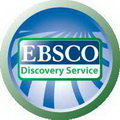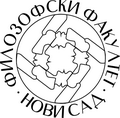МОТИВАЦИЈА СТУДЕНАТА ХЕМИЈЕ ЗА ИЗУЧАВАЊЕ ХЕМИЈСКИХ НАСТАВНИХ САДРЖАЈА
Apstrakt
Циљ рада је да се испита мотивација студената за учење хемијских наставних садржаја као и да се испитају разлике у мотивацији студената различитих година студија и студијског програма. Укупно 185 студената прве и четврте године хемије попунило је упитник за процену мотивације за учење хемије која се састоји из пет супскала: самоефикасност, примена стратегија активног учења, схватање значаја хемије као науке, мотивациона оријентација на учење и оријентација на постигнуће. Добијени резултати су показали да су студенти хемије генерално мотивисани за изучавање хемијских садржаја. Студенти завршних година су показали већу мотивисаност за учење у односу на студенте прве године а разлике се пре свега односе на њихово осећање самоефикасности. С друге стране, стратегије активног учења у већој мери примењују студенти прве године. Разлике у мотивацији између студената различитих група се нису показале значајним изузев у примени стратегија активног учења.
Reference
Brković, A. D., Petrović-Bjekić, D., & Zlatić, L. (1998). Students’ motivation for teaching courses, Psihologija, 31(1-2), 115-136.
Çetin Dindar, A., & Geban, Ö. (2011). What affect high school students’chemistry learning?. Western Anatolia Journal of Educational Sciences, 439-442.
Chandrasegaran, A. L., Treagust, D. F., Mocerino, M. (2009). Empha-sizing multiple levels of representation to enhance students’ understandings of the changes occurring during chemical re-actions, Journal of Chemical Education, 86(12), 1433–1436.
Eccles, J. S., & Wigfield, A. (2002). Motivational beliefs, values, and goals. Annual review of psychology, 53(1), 109-132.
Glynn, S. M., Taasoobshirazi, G., & Brickman, P. (2007). Nonscience majors learning science: A theoretical model of motivation, Journal of Research in Science Teaching, 44(8), 1088-1107.
Hyde, J. S. (2005). The gender similarities hypothesis. American psychologist, 60(6), 581-592.
Juriševič, M., Glažar, S. A., Pučko, C. R., & Devetak, I. (2008). Intrinsic motivation of pre-service primary school teachers for learning chemistry in relation to their academic achievement, International Journal of Science Education, 30(1), 87- 107.
Juriševič, M., Glažar, S. A., Vogrinc, J., & Devetak, I. (2009). Intrinsic motivation for learning science through educational vertical in Slovenia, Fifth biennal self international conference enabling human potential: The centrality of self and identity, Al Ain: United Arab Emirates.
Kan, A., & Akbas, A. (2006). Affective factors that influence chemistry achievement (attitude and self efficacy) and the power of these factors to predict chemistry achievement, Journal of Turkish Science Education, 3(1), 76-85.
Lee, O., & Brophy, J. (1996). Motivational patterns observed in sixth-grade science classrooms, Journal of Research in Science Teaching , 33(3), 303-318.
Marks, R., & Eilks, I. (2009). Promoting Scientific Literacy Using a Sociocritical and Problem-Oriented Approach to Chemistry Teaching: Concept, Examples, Experiences, International Journal of Environmental and Science Education, 4(3), 231-245.
Mirkov, S. (2008). Orijentacija na ciljeve učenika i njihov značaj za ostvarivanje uspeha u školi, Zbornik Instituta za pedagoška istraživanja , 40(1), 37-53.
Olić, S., Adamov, J., & Babić-Kekez, S. (2014). Motivation as a predictor of pupil’s achievement in chemistry, Istraživanja u pedagogiji, 4(2), 24-36.
Olić, S., Adamov, J. i Segedinac, M. (2014). Motivacija učenika za učenje hemije u srednjoj školi, Zbornik radova, Metodički aspekti unapređenja nastave - prednosti i izazovi, Beograd, 67-76.
Olić, S., Ninković, S., & Adamov, J. (2016). Adaptation and empirical evaluation of the questionnaire on students’ motivation towards science learning, Psihologija, 49(1), 51-66.
Ryan, R. M., & Deci, E. L. (2009). Motivation, learning, and well-being, Handbook of motivation at schoo, l (pp. 171-195), New York: Routledge.
Salta, K., & Koulougliotis, D. (2012). Students’ motivation to learn chemistry: The Greek case, Proceedings of the 1st International Conference New Perspectives in Science Education, (pp. 8-9), Florence – Italy.
Schunk, D., & Pajares, F. (2009). Self-efficacy theory, Handbook of motivation at school (pp. 35-53), New York: Taylor Francis.
Stuckey, M., & Eilks, I. (2014). Increasing student motivation and the perception of chemistry’s relevance in the classroom by learning about tattooing from a chemical and societal view, Chemistry Education Research and Practice, 15(2), 156-167.
Tabachnick, B., & Fidell, L. (2007). Using multivariate statistics, Boston: Pearson Education.
Tuan, H. -L., Chin, C. -C., & Shyang, S. H. (2005). The development of a questionnaire to measure student’s motivation towards science learning, International Journal of Science Education, 27(6), 639-654.
Tüysüz, C. (2010). The Effect of the Virtual Laboratory on Students’ Achievement and Attitude in Chemistry, International Online Journal of Educational Sciences, 2(1), 37-53.
Zusho, A., Pintrich, P. R., & Coppola, B. (2003). Skill and will: The role of motivation and cognition in the learning of college chemistry, International Journal of Science Education, 25(9), 1081-1094.







